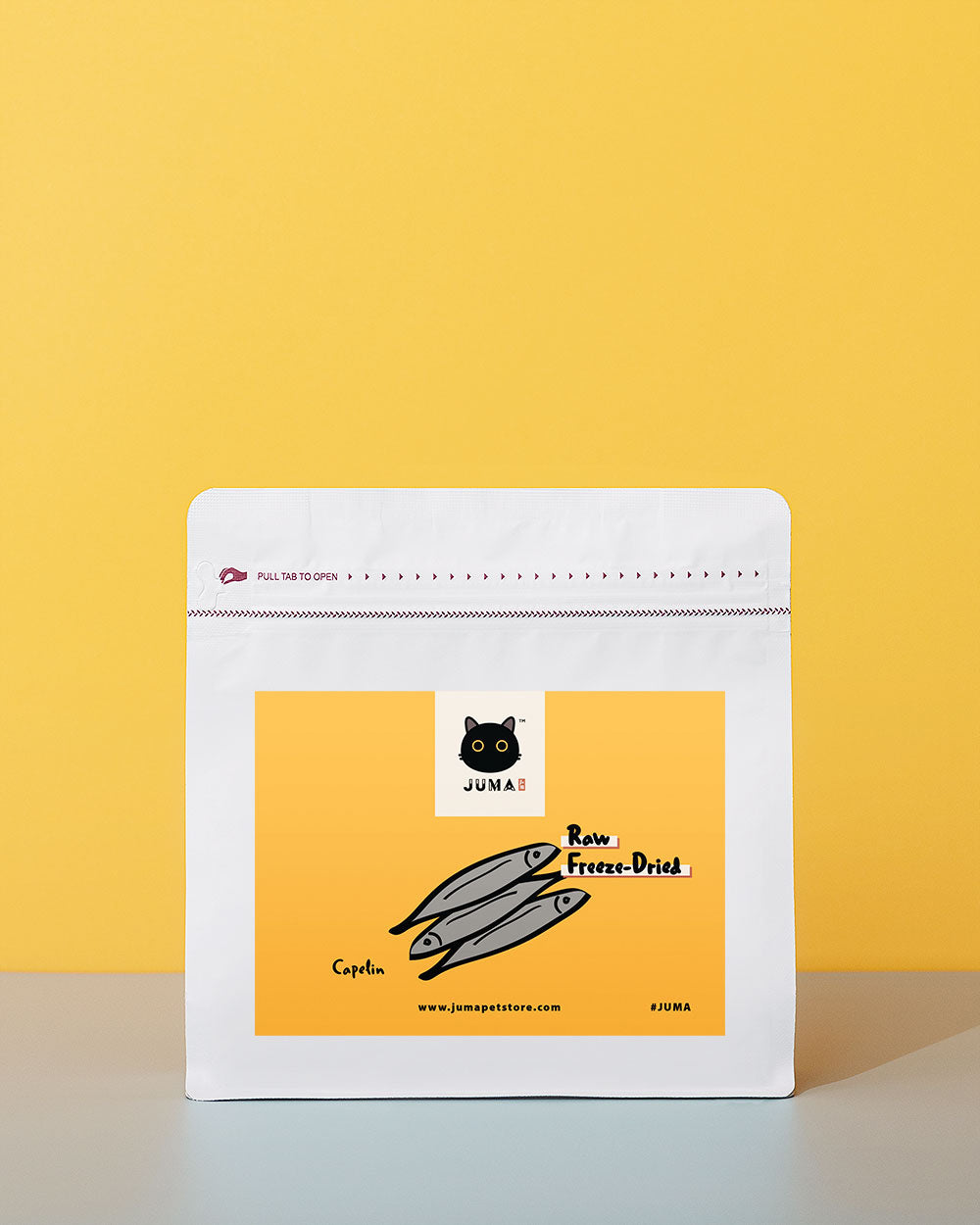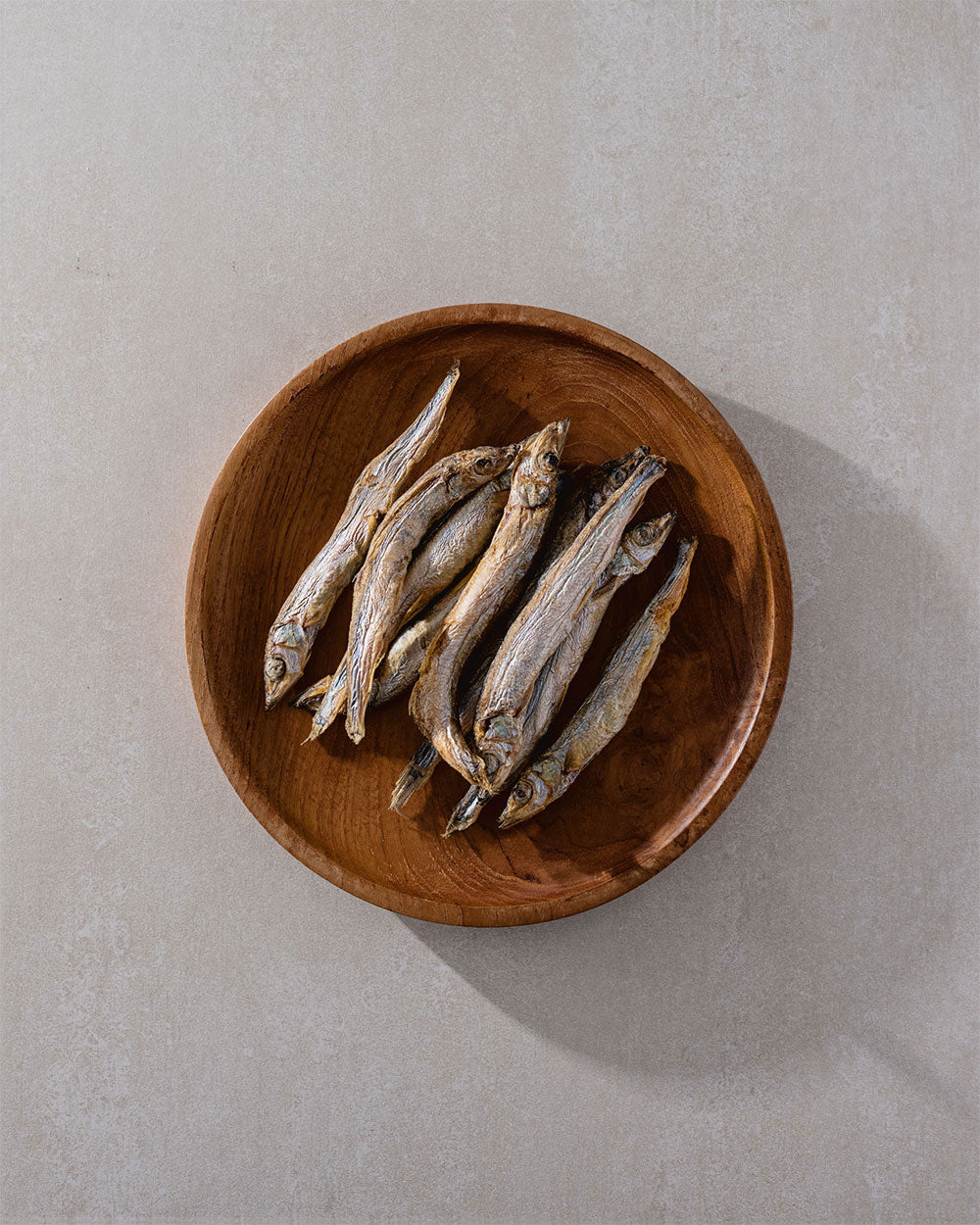JUMA
Capelin
Capelin
Suitable for all cats & dogs
Couldn't load pickup availability
Share
Capelin are rich in protein, vital for cats' muscle growth. Its roe has omega-3 fatty acids that support heart health and cognition. Both are high in vitamin B12 and selenium, essential for red blood cell production, nervous system function, and thyroid health. The roe is low in calories, and capelin is highly digestible, promoting dental health.
Ingredients
Ingredients
Capelin with Roe (100%)
Features
Features
- High in Protein: Both capelin and roe are good sources of protein, which is essential for cats' muscle growth and maintenance
- Omega-3 Fatty Acids: Capelins rich in omega-3 fatty acids, which are crucial for heart health, reducing inflammation, and promoting cognitive function in cats
- Vitamin B12: It is particularly high in vitamin B12, which is important for the production of red blood cells, the formation of DNA, the functioning of the nervous system, and the metabolism of fats and proteins
- Selenium: Both capelin and roe provide selenium, a mineral necessary for thyroid function, and immune health, and act as an antioxidant to protect cells from oxidative stress
- Low in Calories: The roe is low in calories, which can aid in weight management for cats
- Digestibility: When properly prepared, capelin can be easily digestible and gentle on a cat's digestive system
- Nutrient-Rich: Capelin contains essential vitamins and minerals such as vitamin D, vitamin B12, selenium, and magnesium, contributing to overall well-being
- Dental Health: The natural fish flavour and texture of capelin can help clean teeth and promote good dental health by reducing plaque and tartar buildup
Feeding Guide
Feeding Guide
At most 20% of daily staple food.
Storage
Storage
Store in a cool, dry place away from heat and direct sunlight. Make sure the ziplock is sealed tight at all times for maximum freshness. Best consumed within 3 months after opening.
Guaranteed Analysis
Guaranteed Analysis
- Crude Protein ≥ 42.0% (GB/T 6432-2018)
- Moisture ≤ 6.0% (GB/T 6435-2014)
- Crude Fat ≥ 5.0% (GB/T 6433-2006)
- Crude Ash ≤ 15.0% (GB/T 6438-2007)
- Escherichia coli (MPN/g) < 3.0% (GB/T 18869-2019)
301.5kcal per 100g* for reference purposes only.
After testing by authoritative organizations, this product meets the nutritional standards of GB/T.
Shipping Information
Shipping Information
Orders paid before 11pm will be fulfilled on the same day and arranged for courier pick-up on the next working day.
Estimated Delivery:
- West Malaysia: 1-3 working days
- East Malaysia & Singapore: 5-7 working days
Tracking Number:
- You can find it on your Account page upon fulfilment.
Remarks
Remarks
The grammage, color, and sizes of the products may vary due to the raw materials in every batch.



Make Feeding Fun
easy ways to feed your freeze-dried meals
-
dry food
Feed our freeze-dried directly as treats. Perfect for positive reinforcement training and bonding.
-
wet food
Rehydrate our freeze-dried in lukewarm water so it absorbs the water and becomes a healthy meal.
Highly recommended to increase your cat's daily water intake.
-
food topper
Mix our freeze-dried with your cat's food, or crumble it over the food.
Perfect for kibbles and canned food.
for first timers
-
start little, then slowly adjust accordingly
Introducing new food to cats in small amounts is crucial. It helps them acclimate to novel flavors and textures, reducing digestive stress. Monitor their reaction; if they accept it well, incrementally increase portions over a week. This approach minimizes stomach upset and identifies food sensitivities early.
-
if your cat diarrhea/vomit after freeze-dried
When a cat accustomed to eating only cat food develops diarrhoea or vomit after trying freeze-dried meat for the first time, this may be due to the cat's digestive system reacting to the new food. Ask JUMA for some suggestions to help deal with this situation.
-
not every cat shares the same love of food
Cats' tastes vary due to individual preferences, breed differences, and past experiences. Some are picky, while others are more adventurous. Health and age also influence their food choices.
-
try different feeding method - dry and wet
Introduce gradually. Start with a small piece mixed in with regular food. Monitor for interest and digestion. Increase portion slowly over a week. Offer as a reward post-meal (dry or rehydrated) or a treat during play.



